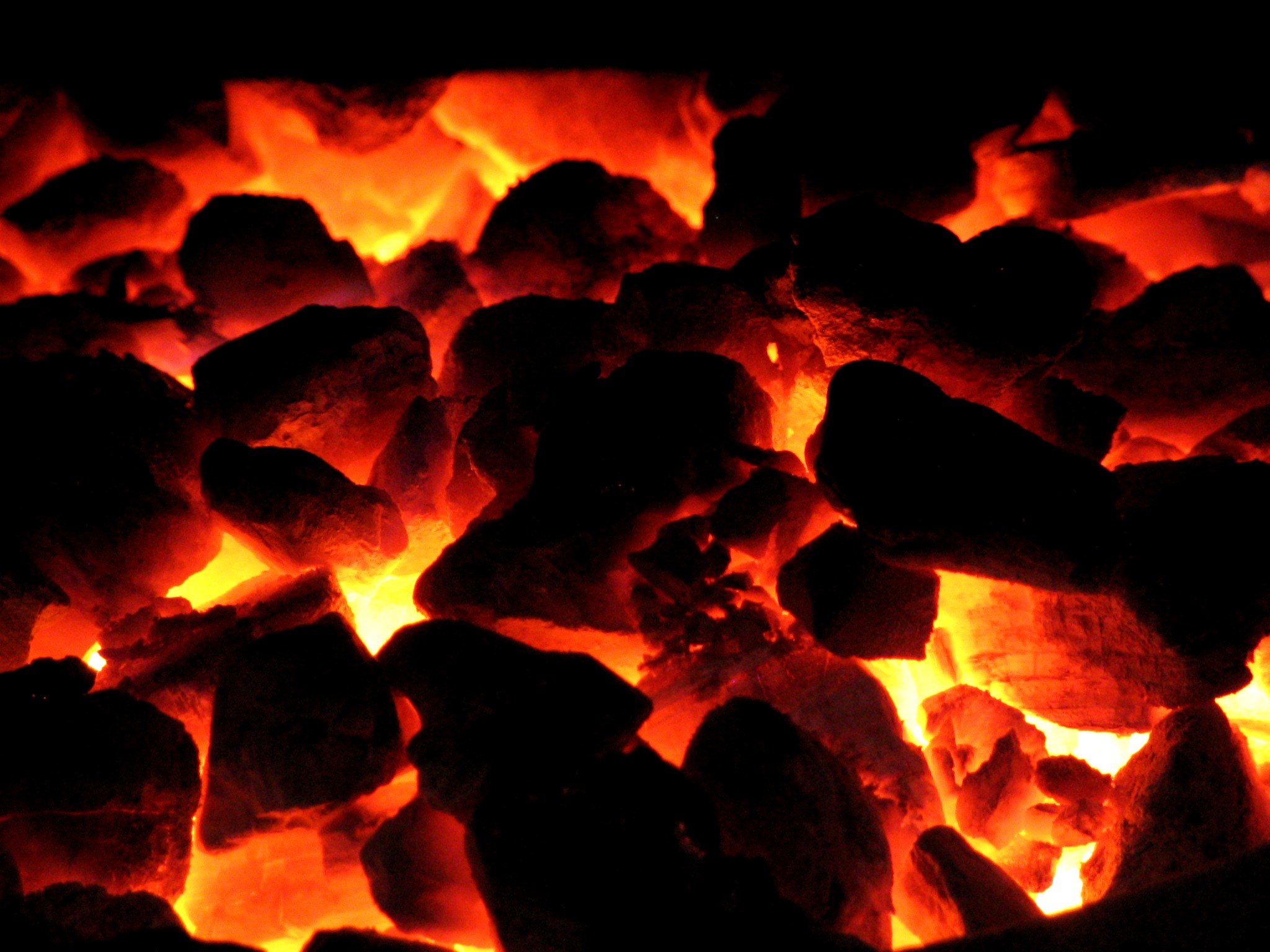Coal, gas, and oil are among the top fossil fuels used globally for generating electricity and meeting energy demands. Coal fired plants use different kinds of machinery that convert heat energy produced from combustion into mechanical energy.
Coal, which is readily available in most of the developing and developed world, has been used as a major source of fuel even in ancient human civilizations. Its use was also found in historic steam engines at the dawn of the industrial revolution. However, environmental considerations have challenged the use of coal as a fuel in the 21st century. But solutions exist whereby coal can be used in a way that it causes less environmental harm. Modern technology is there to help.
There is a trend in developed countries to switch to renewable energy sources for their power requirements. Despite this, there are over 50 countries that have more than 85% dependence on non-renewable energy resources at present. These include the oil rich Arab countries, China, Australia, South Africa, some US states and European countries. Additionally, if we look by sector, 79% of the global industrial energy requirement is fulfilled by coal powered electricity production.
Developing economies use coal as an energy source because it’s the cheapest source of fuel for electricity generation. Most developing countries rely on coal because it is locally sourced, therefore brings down the power tariff. India has increased its electricity generation from coal threefold since the 1990’s justifying it as the fuel of choice for the now developed countries during their developing stage. Even now, developed countries like Denmark, have thermal power plants as backup for electricity generation, if renewable fails.
Dr. Abid Qaiyum Suleri, Executive Director, Sustainable Development Policy Institute (SDPI) said adopting coal technology to meet energy shortage at a time when the world is moving away from it is certainly not a good idea. But, there are number of factors leading to this decision. Pakistan was and still remains an energy thirsty country. The current government came to power partially on the promise that it would resolve the energy woes of the country. Our major reliance for electricity had been on gas, hydel, and furnace oil. The coal, nuclear and renewables contribute a minor percentage in our energy mix. Both gas (despite import of LNG) and hydel (due to climate change, and contested use of water) are no more predictable sources of electricity generation in the country.

Oil prices always remain prone to fluctuation. After observing a historic low since 2008, they are again bound to rise, turning up the per unit cost of electricity which makes it an expensive affair for Pakistan.
“Use of coal technology for power generation purposes is decreasing but not dying in the civilized world,” said Fazal Ullah Quershi Ex-chairman NEPRA. He said advances in coal technology have allowed the world to use coal in power generation for meeting energy needs. Coal has been used extensively in power generation where better technology is employed to ensure that there is a balance between ecology and economics in producing sustainable and affordable energy.
“Pakistan’s current energy crisis is due to reliance on wrong fuel mix and dependence on imports. And, in the future, unless we invest in stable fuel sources, the demand and supply gap is expected to widen further given our current power capacity. At Pakistan’s current population and urbanization growth rate, we would need six times more energy than what we have installed, by 2030,” said Fazal Ullah Qureshi.
Ex-chairman NEPRA said Thar coal source has become Pakistan’s energy security. Coal quality and economics of Thar coal have been compared favourably with other lignite mines around the world. Thar lignite can be utilized in mine-mouth power plants and can be transported to India, China, Germany etc. Also, mining at Thar is technically, economically and environmentally viable while Thar coal compares favorably with other lignite mines around the world such as those in India and Germany. Electricity of 5,000 megawatt can be produced for 50 years with 1.57billion tons of coal and Thar coal will play vital role in meeting country’s power requirements, he added.
Coal is a primary energy source. It supplies around 30% of the primary energy needs all over the world, generating 40% of electricity. Some of the biggest producers are China, USA, India and Indonesia. Compared with oil and natural gas, it is one of the most abundant sources of energy. Every year 1,000 million ton of lignite (low grade) coal is mined globally. According to the U.S. Energy Information Administration (EIA), coal reserves in the United States alone can last up to approximately 190 years, while the rest of the world has at least for another 300 years. So even if it is considered non-renewable, it is unlikely that there will be a shortage of coal any time soon.

Dr Farid A Malik Ex-chairman Pakistan Science Foundation said that by looking at the electricity generation mix of the countries that are blessed with coal, it is evident that coal is and in near future will remain the largest contributor in meeting their energy need. Countries like Poland, South Africa, China, India, Australia, Czech Republic, Kazakhstan,Germany, USA, UK, Turkey, Ukraine and Japan are generating 96%, 88%, 78%, 78%, 77%, 72%, 69.9%, 52.5%, 52%, 37%, 31.3%, 27.5% and 22.9% of electricity from coal respectively.
In comparison, Pakistan only generates 0.04% of electricity through coal. However, coal reserves of Thar only can generate 10,0000 MW of electricity for the next 30 years without load shedding and at a rate of Rs 4 which is less than the current cost of electricity production.
Although environmental considerations have challenged the use of coal as a 21st century fuel, yet future of coal rests on the success of state of the art Integrated Gasification Combined Cycle (IGCC) technology while coal still produces more than 50% power globally. And, with close to 1200 billion tons of global coal deposits it will remain an important energy resource in the future. While, use of around 1000 million tons of Lignite coal annually calls for environmental sensitivities.
Coal is considered amongst the dirtiest fuels which harms the environment badly. Pakistan is now moving from a gas dominated energy mix to coal. By some estimates, the local use of coal by 2030 will be around 30 percent, for which about 50m ton of coal will have to be mined annually.

Emissions from coal-fired power plants are being blamed for the greenhouse effect resulting in global warming. There is a two-pronged approach in the use of coal for power generation thereby making the operations environmentally sustainable. For the existing plants, standards have been enforced eg BACT (Best Available Control Technology), MATS (Mercury and Air Toxic Standards), etc, whereas for new plants instead of direct combustion, coal is first gasified and turned into a clean fuel called SNG (Synthetic Natural Gas) which is now competing with LNG (Liquefied Natural Gas) as a clean source of energy,
According to Dr Farid A Malik, Pakistan, in order to meet its energy needs, has to rely on its indigenous coal deposits. He said energy deficient nations like Pakistan have no option but to rely on indigenous coal reserves for reaching up to 30 – 40% of the energy mix by 2030. And, SNG (synthetic natural gas) is expected to be a viable option for coal rich countries like Pakistan while environmental friendly technologies like IGCC hold promise for the future of coal.
Use of coal in the 21st century is highly regulated due to environmental considerations. For optimum utilization of gas pipeline network, production of synthetic natural gas from coal seems to be the most logical option. State of the art technology like IGCC (Integrated gasification combined cycle) is being planned for Thar coal deposit. Mining followed by above ground gasification is the way forward for a coal rich and gas starved nation like Pakistan.
 Countries in the West exploited their indigenous coal resources to grow their economies exponentially, they set up industries, mechanized their production techniques, introduced rural electrification and so on.
Countries in the West exploited their indigenous coal resources to grow their economies exponentially, they set up industries, mechanized their production techniques, introduced rural electrification and so on.
The west’s carbon footprint is worse than that of China and India, as historical emissions are a greater contributor to climate change than the current. Using data from the World Resources Institute, the US had the highest emissions between 1850 and 2007 at 28.8%, whereas China only produced 9%. As a result, developed countries are introducing legislation to restrict the use of coal due to its environmental impact. The West is shifting to lower emissions technologies and renewable resources because of growing concerns over carbon emissions that contribute to global warming and other emissions. In retrospect, Pakistan has one of the lowest carbon footprint in the world, and the concerns raised in the West are not as dire as implied.
About the future of coal in the world, and particularly in Pakistan, Dr. Abid Qaiyum Suleri, Executive Director, Sustainable Development Policy Institute (SDPI) said, “ I think coal’s days are numbered. Due to the negative impact of coal on environment, very soon the countries reliant on coal would be accused of eco-dumping (selling at lower cost than production cost due to comprising on environment).

The climate change agreement in PARIS during COP21, and its subsequent endorsement in COP22 in Marrakech are some of the developments discouraging the use of coal. However since coming into power, US President Donald Trump has rolled back Obama eras climate policies and also given the go ahead to the Keystone XL pipeline, putting the global climate change agreement into jeopardy.
Despite the bad representation especially from the environmentalists, coal has many applications and not just in electricity generation, which is why it remains a vital product all over the world. What is used to generate power is known as a steam coal or thermal coal, while the coking coal or metallurgical coal is used mainly in producing steel. If coal mining were to stop, a lot of industries will be affected, including paper manufacturers, pharmaceutical firms, and alumina refineries. This is why it is highly unlikely that coal production will completely stop, unless it totally runs out, which would be a long time coming. Unfortunately, coal has negative impacts, which leave the world torn between two ends of the spectrum.
China being an export driven economy requires that their products are priced competitively in the global markets. To achieve this, it is essential for the industrial sector to have access to a reliable and cheap source of electricity. This is where coal comes into the picture. China has large reserves of coal, making it the fuel of choice for power generation and providing it with a cheap, abundant source of energy.
In addition, mining is a labor-intensive industry; therefore it is a source of jobs for China’s large labor force as well.
During the Industrial Revolution, fossil fuels seemed to be the ideal energy source. Steam locomotives, the quintessential machines of the Industrial Revolution, used coal as a fuel source to compensate for a lack of firewood and charcoal. Coal was easy available from seams near the surface, it could also be used in households in its natural form. Because of its role in the industrial revolution, coal became the fuel of choice of developing economies over the world.
Over time, the concerns over carbon emissions became the single most influential factor for global warming. Not only was the West a major contributor of carbon emissions, they also had the largest consumption footprint, according to recent research conducted at the National Academy of Science at the US. It became the responsibility of the West to consolidate a global effort to reduce carbon emissions.
Additionally, coal demand is now shifting to Asia, where emerging economies with growing populations are seeking affordable and secure energy sources to power their economies. Research on clean coal technology is underway, which would reduce the environmental impact of coal.
To address the environmental concerns, various solutions have been employed. China, USA and India are the largest users of coal. Stringent regulations in the form of environmental impact assessments (EIA) and mine closure insurances on currently operating mines by the world interest groups are in practice to reduce the environmental harms.
Keeping in line with the international standards, SECMC conducted a detailed EIA to assess the damage that might be caused by mining in Thar. The studies were conducted for both the mine and the power plant in Thar Block-II by international consultants SRK UK and Hagler Bailly Pakistan. A NOC for Mining & Power Projects was issued by SEPA after public hearings and expert review meetings.’

Even today, the most efficient solar cells only convert just over 20% of the sun’s rays to electricity. Besides their low conversion efficiency, solar panels require substantial initial investment. With increased advances in solar cell technology, this number is likely to increase, but the storage will always be a constant running expense.
Pakistan’s energy mix from historical perspective, current status and future plan.
Pakistan has huge resources of coal that remain untapped with less than 1% contribution in the energy mix. It relies heavily on thermal energy which makes use of imported oil as a fuel source. Over the years, Pakistan has shifted from indigenously sourced fuel to imported fuel. Imported fuel is an expensive, unstable source as the main fuel source for energy production.
Pakistan energy mix for 2015 was comprised of predominately thermal and hydro with thermal production comprising 67.3% of the total energy produced. Thermal uses Regasified LNG and Diesel. In the future, when Thar coal is used for power generation, thermal production would increase even more but Thar coal will replace some portion of imported fuel.
Using data from 2015, coal is not used for electricity production in Pakistan. However, according to forecasted estimates, by 2020 electricity generation using coal as a fuel would sum up to 15% of total energy produced. And, at mine capacity of 7.6 MTPA (million tons per annum), by December, 2019 Thar Coal Prices will become comparable to imported Coal.
Sindh Engro Coal Mining Company (SECMC) Chief Executive Officer (CEO) Shamsuddin Ahmed Shaikh said SECMC is committed to deliver the true benefit of Thar to the people of Pakistan as early as possible. SECMC plans to add additional capacity of 11.4 MTPA beyond Phase II by Dec 2021, which would bring the electricity tariff down further. Mining at production capacity of 19 MTPA brings the tariff down to 6.5c/kwh. Expanding the mine brings down the coal price and consequently the power tariff is reduced.
Future of coal power generation projects of CPEC
The Government of Pakistan has made the Thar Project part of CPEC and introduced a range of supportive government policies for indigenous fuel for power generation. Under CPEC, there are numerous coal powered plants coming up in the near future. Two power plants of 660 MW each are being set up at Port Qasim, another two imported plants of the same capacity are being set up at Sahiwal. Engro Powergen Thar Limited are setting up two power plants at Thar Block II powered by Thar Coal. Feasibility studies for coal extraction at Block I and VI of Thar block II have been completed.
Officials at petroleum and natural resources ministry said with reserves close to 200 billion tons Pakistan has emerged as a major player in the coal industry. They said International collaboration will ensure proper utilization of coal as mandated by 21st century usage challenges. Being a late entrant Pakistan can benefit from the clean coal technologies available today. “China-Pakistan economic corridor (CPEC) promises to bring the much needed economic growth in the region and coal will play a dominant role in the energy mix of Pakistan reaching up to 30% by 2030,” Shamsuddin said.

Major industrial houses of Pakistan and prominent Chinese investors have expressed interest in obtaining coal from SECMC to set up power projects. Thal and Hubco have already received LOI from PPIB to setup 330 MW plants each at Thar Block II. These plants will achieve CoD by Dec 2019.
SECMC plans to expand the Block II mining project to 19 mtpa with the next 6 years taking the total generation capacity based on Block II coal to 3300 MW.
Advantages of coal energy
Coal energy is very affordable due to its stable price unlike any other forms of energy in the market. The abundance of coal energy is another advantage. It is also easy to burn. Reliability is entailed and presented in this form of energy. This form of energy produces high energy upon its combustion process. The power generation scale of coal is great, which makes it possible for building a range of sizes of generation plants. Coal is used to build power stations in different parts of the world since it is a fossil fuel as long as there are huge amounts of it.
Disadvantages of coal energy
Coal energy is producing tremendous amount of carbon emissions that results in climate change and global warming. Coal burning is not considered to be environmental friendly due to the production of harmful by-products like nitrogen, carbon dioxide and sulfur dioxide. Coal burning can cause pollution and damage to the environment causing for example, acid rain. Coal energy is depleting fast because many people consume a large amount of it inefficiently. This form of energy is not a renewable one. It is also ruining the ecosystem and environment and putting many people’s lives in danger especially miners. Underground mining is very hazardous because cave-ins and explosions are common. Unstoppable damages could occur when mining coals.

























The author must realise that Pakistan has reserves of low grade coal in Thar called lignite. It has lot of moisture and ash content, with much lower calorific value. It could be used for 15% power production but most of Chinese power plants are being designed with imported anthracite coal.
IGCC process has been invented decades ago but never got popularised due to high capital cost. There has to be something new invented which will be low on cost, high on performance and environment friendly
Comments are closed.